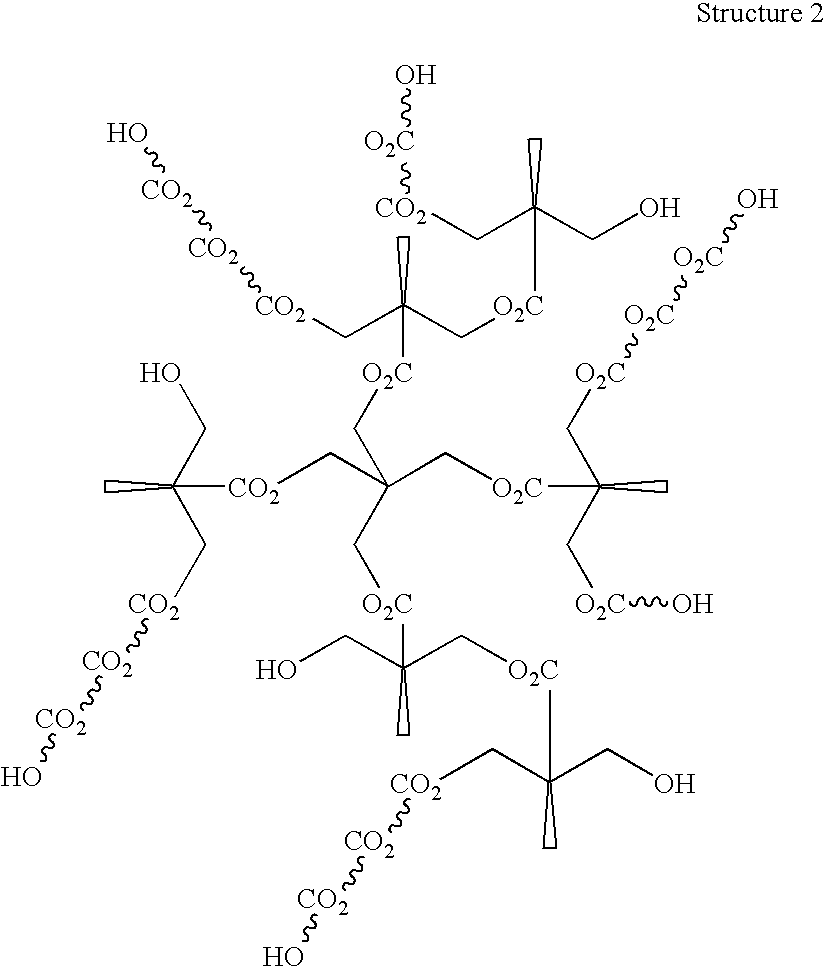Lacquers containing highly branched copolyester polyol
a polyol and polymer technology, applied in the direction of coatings, inks, other chemical processes, etc., can solve the problems of not meeting the rapid drying time that is desired, and the unique characteristics of current commercially available lacquers
- Summary
- Abstract
- Description
- Claims
- Application Information
AI Technical Summary
Problems solved by technology
Method used
Image
Examples
examples
The following highly branched copolyester polyol solutions were prepared and used to form coating compositions.
Highly Branched Copolyester Polyol-solution 1
A highly branched copolyester polyol was synthesized by esterifying dimethylolpropionic acid and ε-caprolactone with a Tin(II) Catalyst as follows:
The following constituents were charged into a 3 liter three-neck flask equipped with a mechanical stirrer, thermocouple, short path distillation head with a water condenser under nitrogen flow: dimethylolpropionic acid (DMPA, 320 g, 2.39 mole), ε-caprolactone (640 g, 5.6 mole), tin (II) di(2-ethylhexanoate)(Sn(O2CC7H15)2), 6 g, 0.015 mole), xylene (40 ml) and heated at 180° C. The reaction progress was monitored by the acid number measurements and by the water volume collected. After 7 hours, 32 ml water was collected, 1 g sample was withdrawn and dissolved in 10 ml DMSO (dimethyl sulfoxide), and the acid number (8.3) was determined by titration with 0.1 N KOH in methanol. The hot, vi...
PUM
| Property | Measurement | Unit |
|---|---|---|
| weight percent | aaaaa | aaaaa |
| weight percent | aaaaa | aaaaa |
| glass transition temperature | aaaaa | aaaaa |
Abstract
Description
Claims
Application Information
 Login to View More
Login to View More - R&D
- Intellectual Property
- Life Sciences
- Materials
- Tech Scout
- Unparalleled Data Quality
- Higher Quality Content
- 60% Fewer Hallucinations
Browse by: Latest US Patents, China's latest patents, Technical Efficacy Thesaurus, Application Domain, Technology Topic, Popular Technical Reports.
© 2025 PatSnap. All rights reserved.Legal|Privacy policy|Modern Slavery Act Transparency Statement|Sitemap|About US| Contact US: help@patsnap.com



